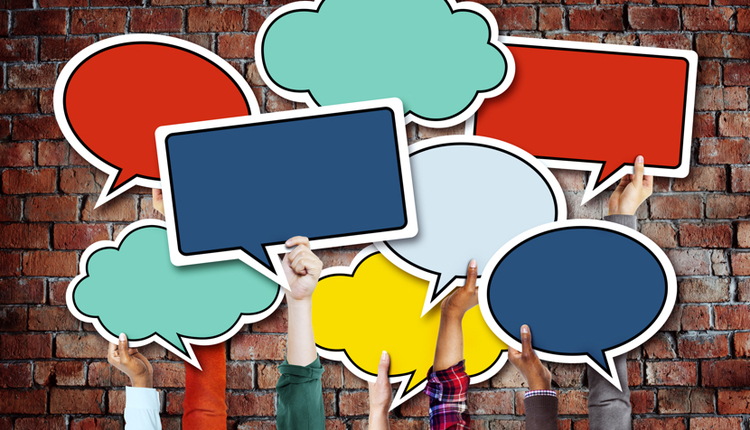
The key assets of any company are its people, particularly the ones facing customers. It’s their ideas that lead to innovation, which will, in turn, enhance and grow the business. People make your business work, and keeping them engaged has become a key priority for organizations worldwide. Many organizations have developed an annual survey process to gauge and measure engagement.
High employee engagement has been shown to improve earnings, while low engagement has the opposite effect. Recognition programs that give employees a role in the evaluation of their peers bring a higher level of contribution and engagement in the work process. Empowering employees goes a long way in making them feel valued at work. High engagement means employees feel valued, even fulfilled, in their work and more committed to the company and their colleagues. This leads to better performance on an individual and company-wide level.
So, how do companies get employees engaged? There is an interaction continuum that engages companies in a bidirectional dialog with employees. Companies have to listen and have to engage in an ongoing conversation. It’s the same lesson marketing professionals are learning with their content marketing programs. While listening is a simple concept, it requires a systematic approach to gathering and analyzing data in order to get actionable insights.
Recognition is a major aspect of employee engagement and the interaction continuum. When employees are engaged and recognized for their ideas, it feeds a loop of new innovative thinking that improves the company. Engaged and contributing employees help to grow the business. A well-implemented social recognition program can amplify traditional employee recognition programs by making them more transparent and interactive. Recognizing people has an impact on others by motivating them to perform at higher levels.
Social recognition derives feedback and recognition from multiple channels of interaction. These channels are bidirectional and global in scope: feedback and recognition from external constituents are just as important as from internal colleagues. Channels include:
High employee engagement has been shown to improve earnings, while low engagement has the opposite effect. Recognition programs that give employees a role in the evaluation of their peers bring a higher level of contribution and engagement in the work process. Empowering employees goes a long way in making them feel valued at work. High engagement means employees feel valued, even fulfilled, in their work and more committed to the company and their colleagues. This leads to better performance on an individual and company-wide level.
So, how do companies get employees engaged? There is an interaction continuum that engages companies in a bidirectional dialog with employees. Companies have to listen and have to engage in an ongoing conversation. It’s the same lesson marketing professionals are learning with their content marketing programs. While listening is a simple concept, it requires a systematic approach to gathering and analyzing data in order to get actionable insights.
Recognition is a major aspect of employee engagement and the interaction continuum. When employees are engaged and recognized for their ideas, it feeds a loop of new innovative thinking that improves the company. Engaged and contributing employees help to grow the business. A well-implemented social recognition program can amplify traditional employee recognition programs by making them more transparent and interactive. Recognizing people has an impact on others by motivating them to perform at higher levels.
Social recognition derives feedback and recognition from multiple channels of interaction. These channels are bidirectional and global in scope: feedback and recognition from external constituents are just as important as from internal colleagues. Channels include:
- Peer to peer
- Employee to manager
- Manager to employee
- Employee to external customers and partners
- External customers and partners to employees
With all of these channels, the onus is on enterprises to listen carefully to employees. Listening and getting engagement can be a consistent source of innovation for enterprises. Usually, high turnover and retention issues follow a cycle of disengagement. At this point, the exit interview is not where you want to start listening. By not listening, you lose a valuable source of information and content that can help the business.
Enterprises have to engage in conversations with employees. Share what the business goals are and what the overall direction is. Get feedback from employees about that direction. Find out what they think and what their issues are; then explain what you’re going to do about those issues. Find out what their career goals are. This is invaluable data from employees that can lead to better training programs. Listen to what employees know about your customers and your business. They have amazing insights into customers and can help improve business processes.
The art of listening to employees means putting them first. It’s an overall people-first strategy that includes putting customers first as well. You’ll find that employee and customer engagement strategies are complementary. You will also find that listening isn’t a once-a-year thing; it’s an ongoing feedback loop of continuous interaction with people. It’s worth the effort—your business will thank you!
Enterprises have to engage in conversations with employees. Share what the business goals are and what the overall direction is. Get feedback from employees about that direction. Find out what they think and what their issues are; then explain what you’re going to do about those issues. Find out what their career goals are. This is invaluable data from employees that can lead to better training programs. Listen to what employees know about your customers and your business. They have amazing insights into customers and can help improve business processes.
The art of listening to employees means putting them first. It’s an overall people-first strategy that includes putting customers first as well. You’ll find that employee and customer engagement strategies are complementary. You will also find that listening isn’t a once-a-year thing; it’s an ongoing feedback loop of continuous interaction with people. It’s worth the effort—your business will thank you!
Dave Smith is the research director and lead analyst for collaboration at Aragon Research. Previously, Mr. Smith was a research analyst at Gartner, where he covered collaboration and web conferencing. Follow him on Twitter @DaveMario.


















